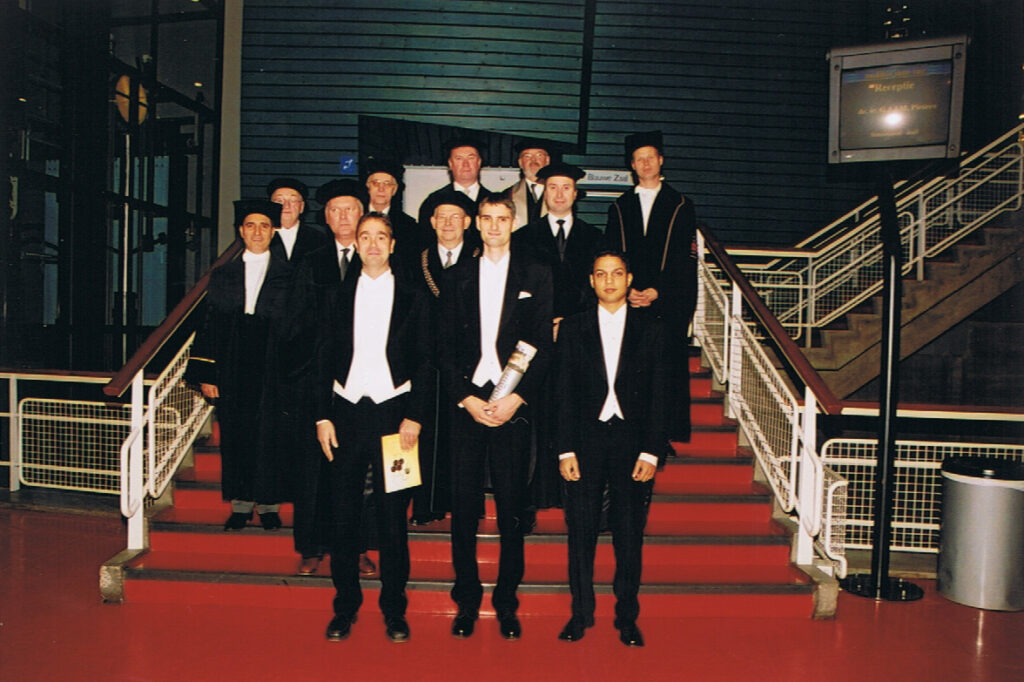It has been 20 years since I wrote my dissertation on the stability and evolution of gravity-driven flow in porous media. On Monday, 15th of November 2004, I successfully defended my research, and I was awarded a doctor of philosophy qualification.

For almost 4 years, I was looking at the following set of equations:
\begin{align*}(M)
\begin{cases}
\displaystyle \phi\frac{\partial(\rho\Theta)}{\partial t} + \nabla \cdot (\rho\mathbf{q}) = 0\;, \\ \\
\displaystyle \phi\frac{\partial(\rho\omega)}{\partial t} + \nabla \cdot (\rho\omega\mathbf{q} + \mathbf{J}_{\omega}) = 0\;, \\ \\
\displaystyle \mathbf{J}_{\omega} = -\rho\mathbb{D}_{\omega}\nabla\omega\;, \\ \\
\displaystyle \mathbf{q} = -\frac{\kappa}{\mu}(\nabla p – \rho g \mathbf{e}_z)\;.
\end{cases}
\end{align*}
They represent conservation of fluid mass $\rho$ in a partially saturated ($\Theta$) porous medium having porosity $\phi$, salt mass $\rho\omega$, dispersive mass flux vector $\mathbf{J}_{\omega}$ (Fick’s law), and conservation of momentum $\mathbf{q}$ (Darcy’s law) where $p$ is the pressure and $\rho g$ the action of gravity. To close this system, one also has to use the (empirical) equation of state, relating $\rho$ and $\omega$. The model is nonlinear due to the $\rho\mathbf{q}$ term.
Under a variety of parameters (model states), geometries, initial conditions, and boundary conditions, I did a study on the stability of its equilibrium solutions (expressed in the unknowns $\rho, p, \mathbf{q}$). Even years after this initial research, three more papers appeared: one in 2008 (using Chebyshev Petrov-Galerkin with pseudo-arclength continuation to detect bifurcation points), one in 2019 (using Chebyshev Petrov-Galerkin), and one in 2022 (using Laguerre Petrov-Galerkin). And some time ago I started with a fourth one which uses Hermite Petrov-Galerkin to approximate solutions of $(M)$.

Leave a Reply